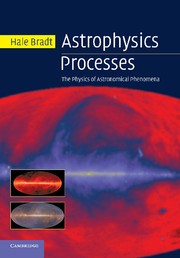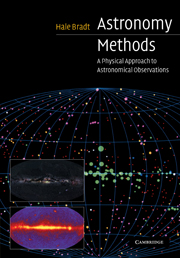What we learn in this chapter
Binary star systems serve as laboratories for the measurement of star masses through the gravitational effects of the two stars on each other. Three observational types of binaries – namely, visual, eclipsing, and spectroscopic – yield different combinations of parameters describing the binary orbit and the masses of the two stars. We consider an example of each type – respectively, α Centauri, β Persei (Algol), and φ Cygni.
Kepler described the orbits of solar planets with his three laws. They are grounded in Newton's laws. The equation of motion from Newton's second and gravitational force laws may be solved to obtain the elliptical motions described by Kepler for the case of a very large central mass, M ≫ m. The results can then be extended to the case of two arbitrary masses orbiting their common barycenter (center of mass). The result is a generalized Kepler's third law, a relation between the masses, period, and relative semimajor axis. We also obtain expressions for the system angular momentum and energy. Kepler's laws are useful in determining the orbital elements of a binary system.
The generalized third law can be restated so that the measurable quantities for a star in a spectroscopic binary yield the mass function, a combination of the two masses and inclination. This provides a lower limit to the partner mass. […]

